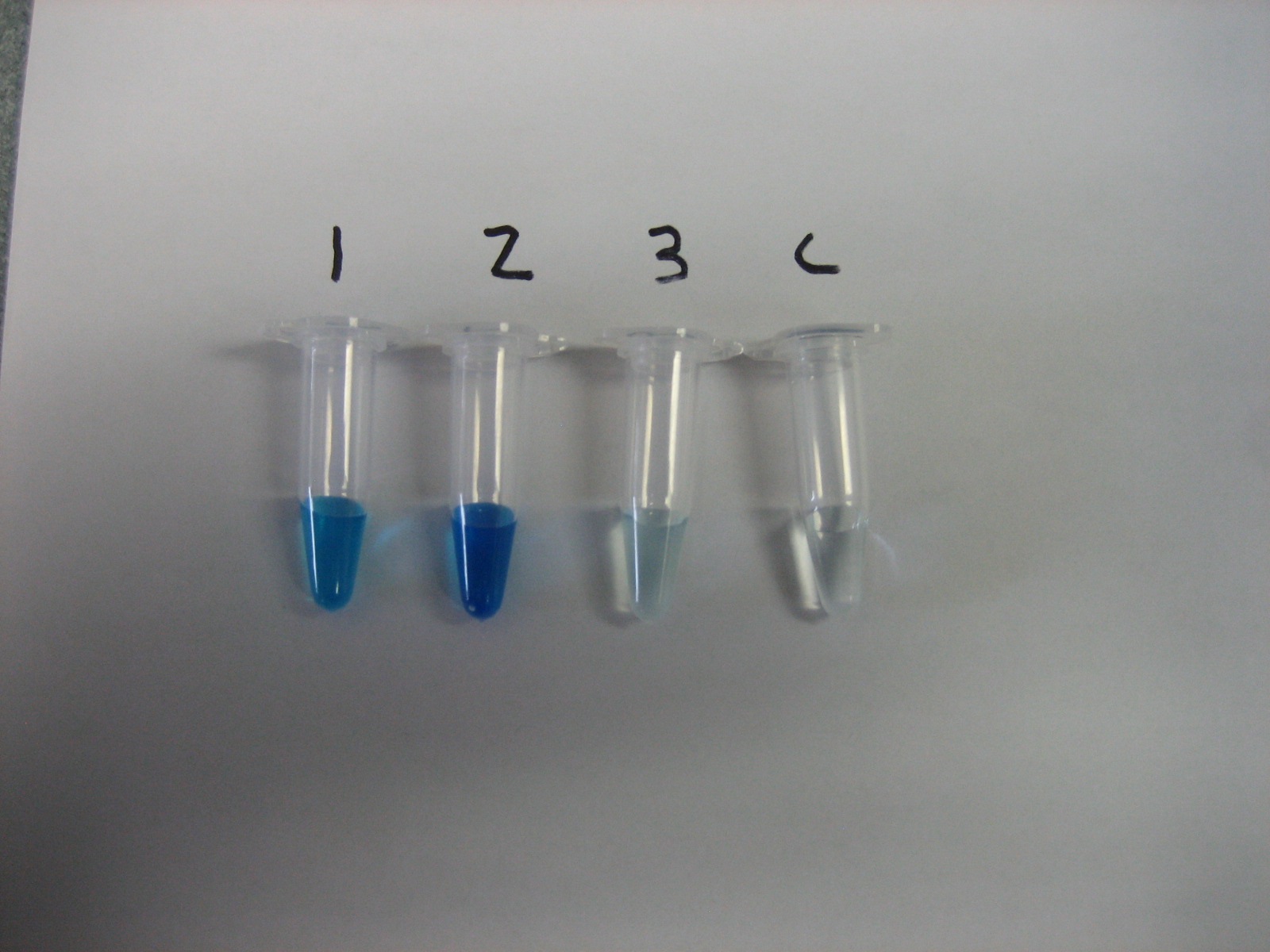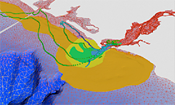You are here
Week 1
6/8/09
I plated KG4@3pm@30°C(WT), KG15(helper)@3pm@37°C, KG18(tranposon)@3pm@37°C and incubated overnight
6/9/09
Experiment Design:
In discussions with Kati regarding the choice of antibiotics for previous results, the question arose of what the affect of the antibiotic itself has on Mn oxidation. This arose due to discrepancies amongst different antibiotics used which resulted in differing levels of oxidation. We decided to test two antibiotics with different mechanisms to determine if the mechanism had a direct affect on the level of oxidation. The assumption is that Mn will not be oxidized in the presence of antibiotics. The question is whether after washing the AB off post-incubation the Mn can be oxidized. If the AB is itself directly responsible, the Mn should be oxidized. If it affects cell machinery resulting in loss-of-function, even washing should not restore WT. The second group is to verify that AB present does prevent Mn oxidation.
| # key | Variance | Growth | Oxidation |
| 1 | Control | Y | |
| 2 | +Amp20µl | Y | |
| 3 | +Cm5µl | Y | |
| 4 | +Mn (Group 2 control) | Y | |
| 5 | +Mn +Amp20µl | Y | |
| 6 | +Mn +Cm5µl | Y |
The oxidation column has been left blank so as not to release experimental results pre-maturely. It does appear as though Amp increases Mn oxidation compared to the control and Cm decreases Mn oxidation compared to the control. The attached picture shows 100microliters of each combined with 100microliters of LBB (which turns varying levels of blue depending on the level of manganese oxidation). In the picture, 1 is the control listed in the table and "C" is LBB mixed with broth but no bacteria to show what no oxidation looks like.







